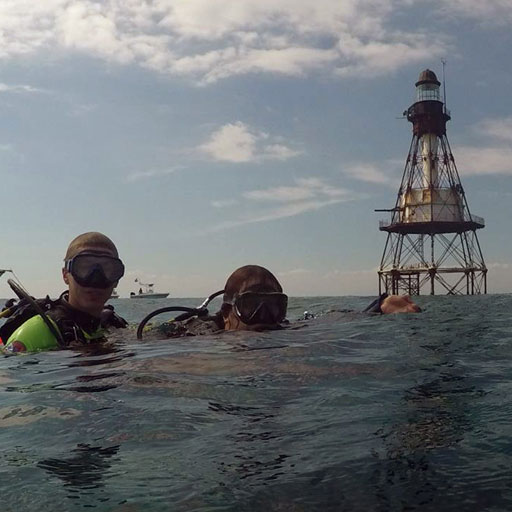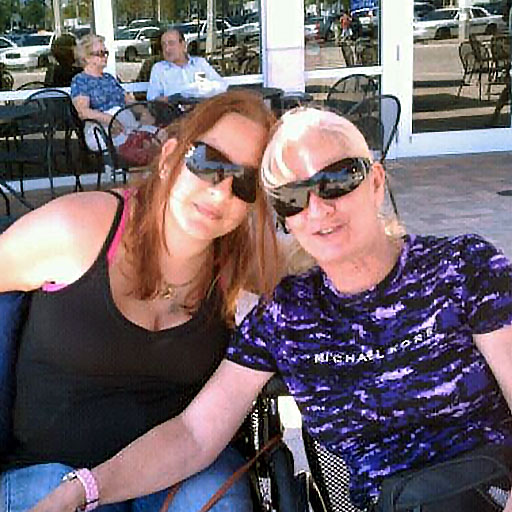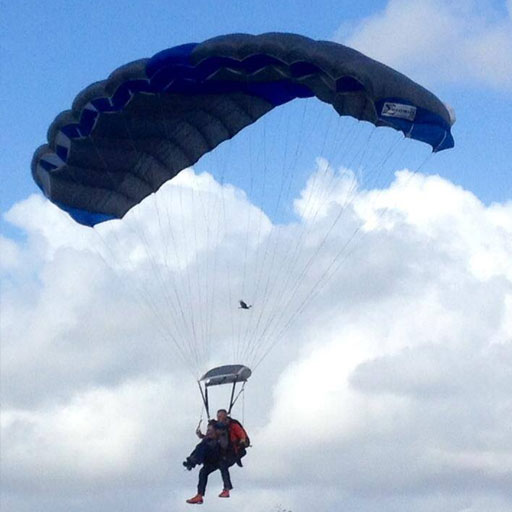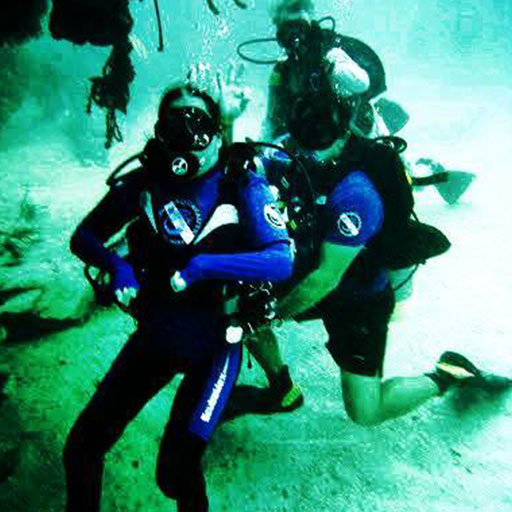It is late at night when I suddenly wake up feeling as if my head is being crushed with a repetitive pounding. Someone must also be tap-dancing on my chest as I can barely breathe and each beat of my heart hurts as if it is going to pop out of my chest. I call out to my Mom who is sound asleep in her bed next to mine, she wakes up immediately and turns on the lights… at least I think she does. My headache is so strong that all I see are spots.
It is 1999, and we are living in Florida; however, 11 years prior to this night, I was a carefree child, addicted to the ocean and all of its wonders until my life changed in the most drastic way when I suffered a Spinal Cord Injury (SCI) at the cervical level of c4/c5. While my injury was considered “incomplete”, the damage done to the spinal cord was severe enough to paralyze me from my chest down and take sensation away. This happened in Venezuela (a third-world country) so knowledge on SCIs was beyond limited, and even scarcer with injuries as high as mine. Life span/quality prognosis? 13 years at the most? Things to be aware of with this type of injury? Ehh… *shurgs*.
Because of such lack of understanding of SCI, as well as no infrastructure for those in wheelchairs, we moved back to Florida where we lived when I was a kid. The United States represented not just hope of being able to walk one day, but also the knowledge of what was happening to my body and how to manage all of the short circuits that placed me in situations like the one described above.
Fast-forward back to that painful night of ‘99: We got to the E.R. and the response I got was: “You are having a migraine, lie down, take this pain pill, and go home”. I did as the E.R. doctor said, yet it took me a full week before I could hold my head up straight, and it just made no sense that I would be having a migraine, especially since my bladder was also acting up. I did some online researching and came across a life-saving forum for individuals with neurological disorders. Upon venting my frustration with the “episodes” I’ve experienced since my injury, I’m strongly advised to see my primary doctor and a urologist as I was having bad cases of “Autonomic Dysreflexia,” (AD) also known as Hyperreflexia.
What on earth is AD? AD is a potentially life-threatening overreaction of the body in response to pain/stimulation below injury level. Have you ever put a shoe on and your toe hurts? Well, that “simple” pain message your brain gets is “short-circuited” (as I like to say) for me. Instead of an “ouch” reaction with some toe wiggling and maybe removing the shoe, my body goes crazy, my blood pressure jumps up to a dangerous level, my pulse drops, my chest feels like a high school band is marching on it, half of my body gets cold sweats, goosebumps and shivers and, if we don’t act fast enough, it escalates to that extreme pounding headache that means it’s gone too far and it is now a life-threatening emergency.
“It’s important for at-risk individuals to know their baseline blood pressure values and to communicate to healthcare providers how to identify as well as manage an AD emergency.”
Hyperreflexia itself is “easy to fix” most of the time by treating the cause (not the symptoms), like for example: a faulty foley catheter, constipation or a bent toe in a shoe; or, more serious issues like a bladder or kidney stone, a fracture, etc. But when you cannot feel your body, narrowing down the cause of it becomes as challenging as diffusing a bomb. You need to try and keep your “cool” while you are getting beaten up by its symptoms as you go through the “common causes” checklist; then, if it’s not being caused by something listed, you’ve gotten 1-2 minutes into an episode that can get out of control any second and has a high potential of landing you in the E.R., where you’d think the medical staff has been trained on this emergency scenario and can work with you to get the AD under control. It is 2017 after all, right?
Yes but no. There are hospitals – such as Memorial Healthcare system in Broward County — that are highly aware of this syndrome and work with the individual on controlling the episode and figuring out the cause; yet, there are other “well-known” places where the staff is not only oblivious to such a threatening syndrome, but to top it off, they downplay it with the patient. This happened to a friend of mine, Jessika, who has a thoracic level SCI and gave up on going to the E.R. of a well-known Hospital two years ago after they not only ignored the AD, but also kept trying to humiliate her by asking her things like: “How do you know so much about autonomic Dysreflexia, did you just Google it?” and “Our job is to keep people alive and you are breathing and good so you can go home”.
I have no choice but to accept that there may be some physicians who live under a rock and do not keep up with research, but if you work in the E.R., and a patient comes in with a blood pressure that is twice their average, a slow pulse, obvious distress as the individual is flushed red, the person has a neurological disorder AND is telling you that he/she is having an “Autonomic Dysreflexia” attack, yet you are clueless on what that is, then hmmm… perhaps YOU should be the one Googling it at the very least? The result of the most basic search will provide you with the complete explanation of what Hyperreflexia/Autonomic Dysreflexia is, as well as what to do; so, based on the newly acquired information, the patient’s medical history plus current symptoms, don’t you think that it becomes obvious this is not a “made up” excuse to pop by the E.R. for some “lets’ chill while you make me feel worse” time?
It’s been 29 years since I became a quadriplegic, and over time we (my family, friends and I) have learned how to handle most episodes of AD. I get them almost every day, but in their mildest form and in a way that I can recognize the cause most of the time. Yet, once or twice a year I will find myself sitting in the E.R. trying hard not to lose control as my body beats me up overreacting to something happening below my chest line; and, while I cannot “feel” the actual source of pain, the tap-dancing-on-my-chest, heart-popping-out, head-crushing feel sure makes up for such lack of sensation.
What can be done about this issue? Awareness, awareness, awareness! Autonomic Dysreflexia is real, it is thoroughly documented, the Reeve Foundation even has detailed information on causes, what to do if a person is having AD, what happens during an episode of AD, etc. I for one carry a wallet card with this info, but if the attending physician is not willing to see me as a whole person, then what are my chances of relaying the importance of his immediate action when I’m nearly passing out from pain? Knowledge is power, and by talking about AD, sharing our experiences and getting the community involved, we can perhaps create a better understanding of this life-threatening syndrome and save the life of someone like Jessika, who spends nights crying in pain from a dangerous pounding headache AD, yet won’t go back to an E.R. And, to be clear, not going is NOT a matter of principal, but rather having the physical strength to tolerate an even more intense AD while she mobilizes herself to a hospital, only to be told in a “politically correct way” to stop being a drama queen… Just spend those 10 seconds in our wheels… Just. 10. Seconds.
Social media, newsletter and more
If you have any questions, product review requests, topic requests and/or any other inquiry, please drop me an e-mail at info@NoReplayNoRewind.com and I will get back to you as soon as possible.









